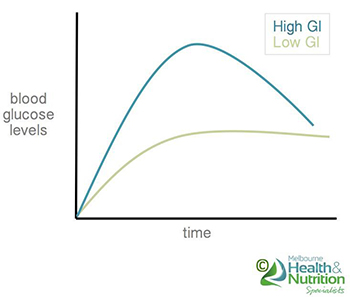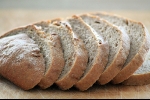You may have heard or been told to limit carbohydrate-containing foods after weight loss surgery. But why is this? And how long do you need to do this for? This article will help to make this clearer and discuss the role of carbohydrates in your diet following weight loss surgery.
What are carbohydrates and which foods contain them?
The human body is able to utilise energy from four dietary sources: protein, fat, alcohol and carbohydrate.1 Of these, carbohydrates are the body’s preferred energy source, and critical for the brain and central nervous system to function.1
Carbohydrate-containing foods:
- Bread
- Rice
- Pasta
- Noodles
- Barley, buckwheat, semolina, polenta, bulgur, quinoa
- Oats
- Crackers
- English muffins
- Crumpets
- Fruit
- Milk
- Yoghurt
- Legumes
- Potato
- Corn
- Sugar
- Biscuits
- Chips
- Cakes/Pastries
- Lollies
- Chocolate
What happens to our bodies when we eat carbohydrates?
When we eat carbohydrate-containing foods, our digestive system breaks them down into glucose.2 Our pancreas then releases the hormone insulin, which facilitates the movement of glucose into our bloodstream, increasing our blood glucose levels.2 The glucose is then able to travel around the body supplying energy. The rate at which carbohydrate enters our blood stream and causes a rise in our blood glucose levels is known as the glycaemic effect.2 The glycaemic index ranks foods based on their effect on blood sugar levels, as either high glycemic index (high GI) or low glycaemic index (low GI).2

Figure 1 compares the change to our blood glucose levels after we eat high GI versus low GI foods. As you can see, high GI foods cause a sharp and quick increase in blood glucose levels, followed by a steep decrease.2 It is this steep decrease that is associated with feeling hungry again soon after eating, and craving sugary foods, as our body tries to keep blood glucose levels stable.2 Conversely low GI carbohydrates elicit a steadier glycaemic response, including a slower decline.2
Should we be eating carbohydrates after weight loss surgery?
Your dietitian will recommend limiting carbohydrate-containing foods post surgery. This is due to the newly reduced capacity of your stomach to hold food. It is important to prioritise protein food sources, such as lean meats, chicken, fish, legumes/lentils and tofu, followed by low starch vegetables. Our bodies need adequate protein not only in the initial phase to recover from surgery, but also long-term to preserve lean muscle mass. Low starch vegetables are also critical as they provide essential vitamins and minerals and dietary fibre.. Limiting carbohydrates means that our body will have to draw on its stored energy, including fat, which aids in weight loss.
Based on this our general guideline is to eat protein and low starch vegetables first, and then have carbohydrate-containing foods at the end of the meal ONLY if you are still hungry.
If you do introduce carbohydrate-containing foods when your portion sizes have increased slightly, stick to 1-3 serves a day.
Some carbohydrates are better than others. It is also important to choose low GI carbohydrates, to keep blood sugar levels stable and to prolong satiety (as already discussed). Table 1 lists common high GI carbohydrates, which should be limited , and low GI alternatives.
Table 1: Common high GI and low GI carbohydrate-containing foods.2
-
High GI Carbohydrates (20%)Low GI Carbohydrates (80%)
-
White and wholemeal breadMultigrain bread
-
White and brown riceBasmati or Doongara rice
-
White potatoSweet potato
-
Lollies, chips, cakes, pastriesPasta
-
Table sugarRolled oats
-
White flourReduced fat milk and yoghurt
-
Fresh fruit
-
Wholemeal flour
In summary, a small amount of low GI carbohydrate is fine post-surgery, once you are well established with normal textures. Every one is different, so if you do not have an appetite for carbohydrates, you do not need to include them. Listen to your body and your individual hunger/satiety cues! Have chat to your dietitian if you would like personal advice.
References:
- Nutrient Reference Values for Australia and New Zealand (2006). National Health and Medical Research Council. Available from: www.nrv.gov.au
- Glycaemic Index (2011) University of Sydney [Updated 2014]. Available from: www.glycaemicindex.com




















